|
I haven’t posted here for a while, but that doesn’t mean that all my New Year resolutions are broken! The TXBPF project has come along well, a pair of boards are now complete and need preliminary tuning. I had originally intended to use my miniVNA for this, but correspondence on the miniVNA yahoo group with M0YOM indicated that the tuning will be too coarse to make them work with acceptable insertion loss (thanks for the advice, James). We have an engineering dept here at work, and I spoke to one of the lab techs (jim) about getting some time on either a real VNA or a spectrum analyser with tracking generator. Whilst Jim was very helpful, it looks like the tasty bits of kit are in various Professorial research labs so out of my immediate reach. It looks like I need to trawl some local amateurs to see who has what that I can borrow. Any offers readers? In the meantime I will build my third board.
0 Comments
Some great movement on the txbpf project. All the vias and SM caps are installed, along with the other hardware which means the MB is now complete and ready to go. The photos below show the two completed boards after I had defluxed them in the workshop. I also made some impact on the filter boards. All the SM caps and relays are installed, so all I need to do is check the toroids, fit the high voltage caps and I am ready to start tuning. I have done one board and all the process took longer than expected – I reckon that completing all 12 boards will take most of next week’s build time, but it is progress indeed!
As the shack is too cold at the moment to work on the remote project, I decided to move onto the next item on my list which I am calling TXBPF. At least 18 months ago Bob, 5B4AGN, designed and kitted a set of W3NQN bandpass filters that fit onto a custom motherboard. This looked like an opportunity that was too good to miss, so I bought two full kits which have sat on my to do list ever since. This week I finally made a real start! The plan is to have a filter for each contest band which can be auto switched by the transceiver – perfect for the NFD run and spotting stations. The first job was to wind the 48 toroidal inductors, half of which were either tri or quadrafilar. This took me most of the week and resulted in some sore fingers for this office-bound monkey. You can see one set of completed torroids below..... The next job is to populate the motherboard and and the filter daughter boards with components. I managed to fit the 80 1206 SMD caps to one MB today, along with the 28 0805 caps to the daughter filter boards. I was pretty pleased with that for a couple of hours work. The photo below whows my workbench in the workshop at QRL. It was a longer than usual lunch :) I don't often work with surface mount components, so I re-read GM3SEK's very helpful RADCOM guide before starting. I must admit that the brief session taught me a lot: 1) I have always relied on the solder to provide flux when soldering. The smaller solder I bought for SM work clearly doesn't have enough flux and my new flux pen, bought following GM3SEK's recommendation, makes all the difference. I am now a flux convert! 2) I often work under surgical microscopes and have over 15 years experience of manipulating things at high magnification. As a result this part of working with SMDs does not worry me at all and to start with I used a pair of old (but functional) electron microscopy forceps to manipulate the SM caps. I my professional life I find these good to tie 10/0 (0.07mm) sutures but found out today that they are too fine to stop the chips "pinging" across the workshop. A rummage in the lab turned up a pair of "rat tooth" forceps that did the job much better. So, all in all, a lot of progress made. It seems I have lost a strip of 1203 caps, but being as I need to kit out a third set of boards that AGN offered without parts, I will pick up the missing caps in a Farnell order next week. Perhaps I'll treat myself to a real set of SM forceps at the same time to keep my new found momentum going. Next job is to order my missing parts and complete the motherboards. That should take up most of next weeks building time.
|
AuthorA few notes on recent radio activity by Steve, M0BPQ. Archives
December 2020
Categories
All
|
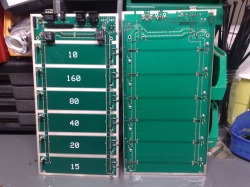
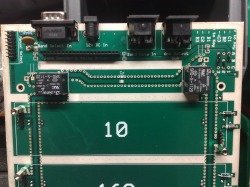
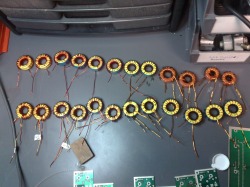
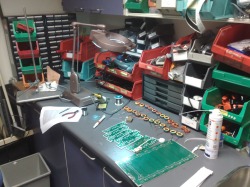
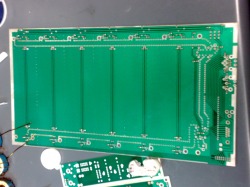
 RSS Feed
RSS Feed
